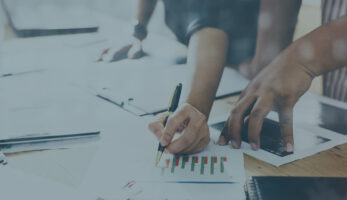November 10, 2023
Background
With over 2.8 million customers in the UK alone, international healthcare provider Bupa relies on its contact centres to manage insurance claims, help customers book treatments and answer often complex enquiries. Though more and more of the claims process has been digitised, the ca.600 contact centre advisors continue to support to customers who either can’t do what they want online, or would rather have the reassurance of dealing with an advisor.
Customers shifting to digital and self-service channels for simpler queries means that calls to a contact centre are typically for more complex issues, and average handle time (AHT) in many contact centres has unsurprisingly risen. However at Bupa’s medical claims division, customer feedback indicated a sense of frustration at how long some calls were taking and managers were concerned that the contact centre would struggle when volumes reached seasonal peaks. Something needed to be done.
Bupa asked Davies to carry out its review service on its multichannel contact centre, to help understand exactly the factors contributing to unnecessary and avoidable increased call length and make recommendations on how to address them.
How we helped
Our team spent time on site at Bupa’s contact centres, observing how advisors managed calls and the operational systems and performance structures they were expected to work within. We also conducted focus groups and interviews with stakeholders at all levels. We then undertook further analysis to understand both the customer and advisor experience and related processes, and benchmarked Bupa’s performance against customer-focussed and relevant external comparators.
The review process identified 16 different opportunities to streamline business processes and thus customer/advisor experiences and remove drivers of avoidable contact. Davies demonstrated how, if all recommendations were implemented with an elevated focus on quality (rather than just minimising cost), AHT could be reduced by an estimated 20%.
Further, these changes would lead to an improvement in customer experience (CX), with calls being more focused on what mattered most to Bupa customers. Through this renewed focus on quality measures and basic operational performance rigour, we uncovered a path to potential operational expenditure (OpEx) savings of 18% within the contact centre. Simple examples included changing the greeting and wrap-up scripts, to be tighter and more pertinent. We identified that automating aspects of post-call note taking – such as replicating data from one system to another, rather than having to re-key it – could also save time, and liberate advisors from low value, repetitive tasks.
Perhaps the most important recommendation however related to in-call support. Under the existing system, when advisors wanted expert input for more complex claims, they simply put a message on the group chat for their managers. But with managers having to adapt to the additional pressures of supporting remote teams, they were no longer always able to reply promptly.
We recommended a new approach, where a small team of highly experienced advisors took on the real-time support role. That would reduce the pressure on managers, lead to faster answers for customers and offer new opportunities to Bupa’s best advisors.
With the green light from Bupa to push forward with implementation, we put together a comprehensive change programme, including a week-by-week timetable that was based on Bupa’s preferred agile delivery approach.
Crucially, we adopted a people-centred approach to change management. That began with engaging managers about how their role would change, for the better, so they could spend more time managing and developing their team. By demonstrating our understanding of their priorities and day-to-day challenges, we quickly secured their buy-in – and then extended the same ethos to engaging the whole of the front-line team.
We then trained several of the managers to lead the full training roll-out to the advisors, an important step in ensuring the sustainability of the change programme.
While the engagement was underway, we also set up a ‘Digital Twin’ of Bupa’s end-to-end contact centre claims process. This software solution allowed us to rapidly model and simulate potential changes to the process and platform – providing Bupa with realistic data and vital reassurance about the impact of our recommendations. That allowed both the Davies and BUPA teams to test and simulate changes to processes and configuration to optimise them before confident deployment at scale.
Results
The first workstreams were delivered within six weeks and quickly resulted in a 4% reduction in average handle time. This not only achieved the preliminary target, but also built confidence in the change programme.
The new expert support team was successfully recruited and trained and a ‘model office’ created so that BUPA can test and learn further changes itself. We handed over detailed documentation and tailored employee and manager adoption guidance to be used within the ‘business as usual’ environment; a crucial component of that was the governance of the model office, to make sure that there is robust evaluation of proposed changes and a full evidence trail.
That was invaluable as Bupa took forward our further recommendations to bring it gradually closer to the 18% OpEx savings we had identified, and to ensure it optimised its advisor capacity ahead of peak periods.
For more information, please contact us here.



